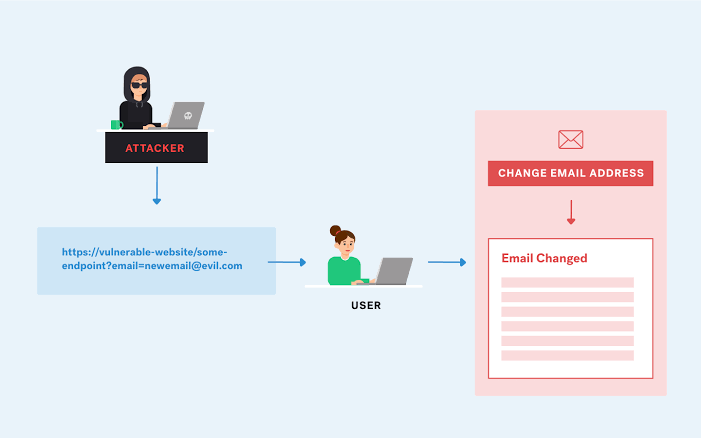The Ultimate Guide to SQL Injection (SQLi)
SQL Injection remains a significant threat to web application security.

SQL Injection (SQLi) is one of the most dangerous and commonly exploited vulnerabilities in web applications. This attack allows attackers to manipulate a website's database by injecting malicious SQL queries through input fields or URLs. In this guide, we will explore SQL Injection in detail, covering its types, examples, prevention techniques, and why it remains a critical concern for web security.
What is SQL Injection?
SQL Injection is a type of security vulnerability where attackers insert malicious SQL code into an application's input fields to manipulate or access the underlying database. This can lead to unauthorized access, data theft, deletion, or even a complete takeover of the system.
For example, an input field for a username might accept SQL commands, enabling attackers to bypass authentication or extract sensitive data.
How Does SQL Injection Work?
SQL Injection works by exploiting flaws in how an application constructs SQL queries. For example:
A normal SQL query:
SELECT * FROM users WHERE username = 'user' AND password = 'password';
Malicious input: user' OR '1'='1
Resulting SQL query:
SELECT * FROM users WHERE username = 'user' OR '1'='1';
This query always returns true, bypassing authentication.
Types of SQL Injection
-
Classic SQL Injection: Injecting malicious SQL code into an input field to manipulate queries.
-
Blind SQL Injection: Exploits vulnerabilities without revealing database errors.
-
Boolean-Based: Infers data based on true/false responses.
- Time-Based: Uses delays to determine query results.
-
Union-Based SQL Injection: Combines multiple queries using the UNION operator to extract data.
-
Error-Based SQL Injection: Relies on database error messages to retrieve information.
-
Out-of-Band SQL Injection: Uses external resources like DNS or HTTP requests to exfiltrate data.
Real-World Example of SQL Injection
Imagine an e-commerce website with a search feature:
Normal query:
SELECT * FROM products WHERE name = 'laptop';
Malicious input: ' OR '1'='1
Resulting query:
SELECT * FROM products WHERE name = '' OR '1'='1';
This would return all products, bypassing the intended search logic.
Impacts of SQL Injection
-
Data Theft: Attackers can extract sensitive information such as usernames, passwords, and financial details.
-
Data Manipulation: Data can be altered or deleted, disrupting business operations.
-
Unauthorized Access: Gaining admin privileges to the database.
-
Website Defacement: Altering website content.
-
Complete System Takeover: Accessing the server and underlying infrastructure.
How to Prevent SQL Injection?
- Use Parameterized Queries Always use prepared statements and parameterized queries instead of concatenating SQL strings.
cursor.execute("SELECT * FROM users WHERE username = ?", (username,))
-
Validate User Input Validate and sanitize all input to ensure it matches the expected format.
-
Use Stored Procedures Define database logic within stored procedures instead of embedding it in application code.
-
Apply Least Privilege Principle Limit database user privileges to reduce potential damage.
-
Use Web Application Firewalls (WAFs) Deploy WAFs to detect and block malicious queries.
-
Error Handling Avoid displaying detailed error messages that reveal database information.
-
Regular Security Testing Perform regular penetration testing and vulnerability scans to identify weaknesses.
-
Update and Patch Systems Keep database management systems and libraries up to date.
SQL Injection Tools
While ethical hackers and penetration testers use tools to identify SQL Injection vulnerabilities, attackers also exploit them maliciously. Common tools include:
-
SQLMap: Automates SQL Injection testing.
-
Havij: Simplifies database extraction.
-
jSQL Injection: Java-based SQL Injection tool.
SQL Injection and OWASP Top 10
SQL Injection is a perennial member of the OWASP Top 10, which highlights critical web security risks. This reinforces its importance and the need for robust prevention measures.
Conclusion
SQL Injection remains a significant threat to web application security. By understanding how it works and implementing best practices, developers and organizations can mitigate this risk and protect their data from malicious actors.
Stay updated on the latest cybersecurity trends and tools by visiting Now Times for more insightful articles!
Disclaimer
The information provided in this article, "SQL Injection (SQLi): Full Guide," is intended for educational purposes only. Now Times does not endorse or encourage any illegal activities or unethical use of the knowledge shared.
SQL Injection is a critical cybersecurity concept that helps developers, security professionals, and organizations understand vulnerabilities to protect their systems. Any misuse of this information for malicious purposes is against the law and could lead to severe legal consequences.
Readers are advised to use this knowledge responsibly, in accordance with ethical practices and applicable laws, to strengthen security measures and combat cyber threats.
Leave a Comment
Releted Articles

Understanding SSRF Vulnerability: A Complete Guide
SSRF is a critical vulnerability that can compromise internal systems and expose sensitive data.

Cross-Site Request Forgery (CSRF): A Comprehensive Guide
Cross-Site Request Forgery is a serious vulnerability that can compromise the security of web applications

Understanding Cross-Site Scripting (XSS): A Critical Web Vulnerability
Cross-Site Scripting is a significant threat to web security, capable of causing severe damage to both users and businesses.

Web Security : Safeguarding the Digital World
In today’s interconnected world, web security is more critical than ever. As businesses and






0 comments
There is no any command yet!